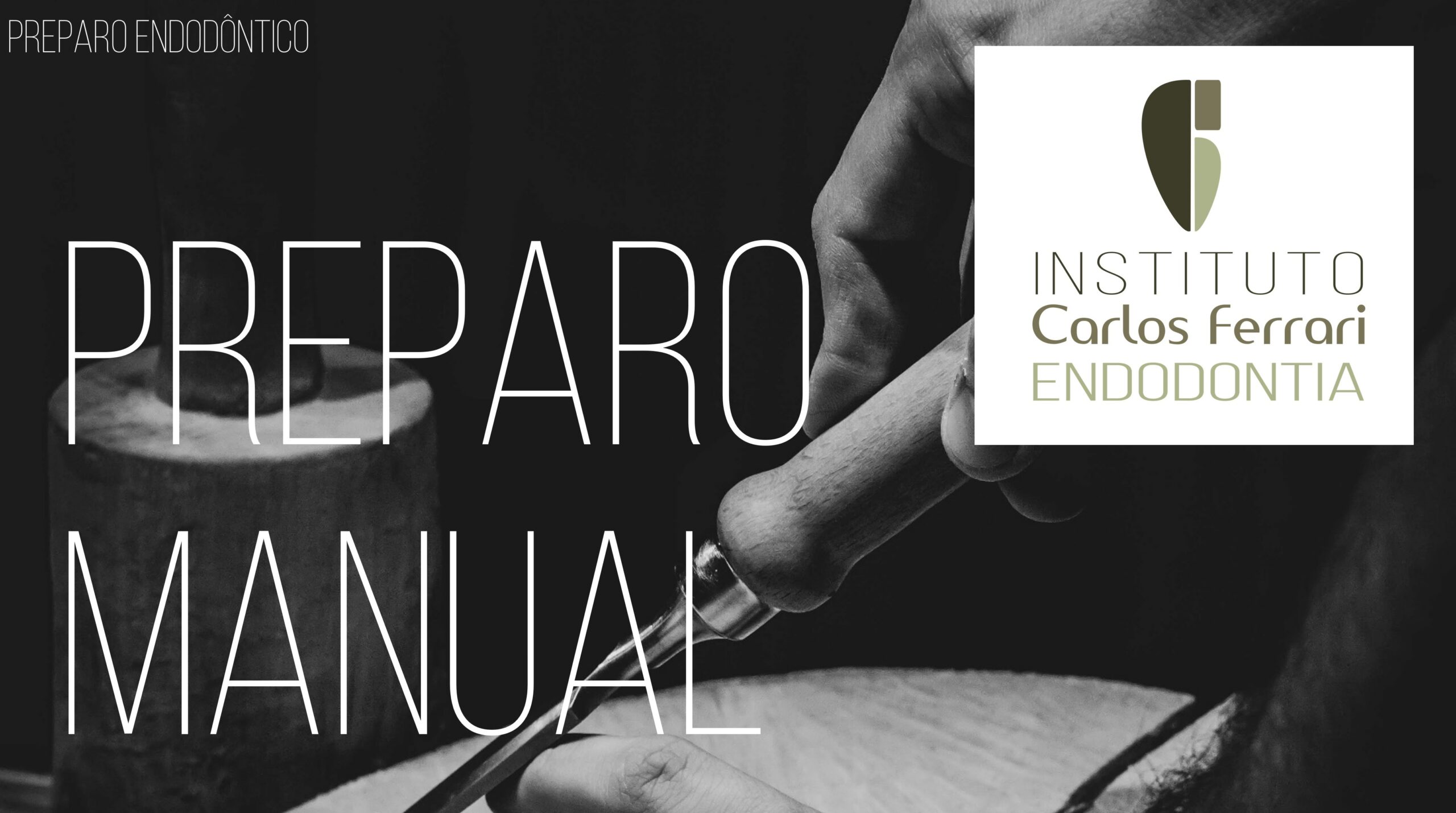Manual endodontic preparation. 2nd lesson in the series of endodontic preparation lessons
Introduction
Kinematics of manual endodontic preparation
Preparation Techniques Apex Step Back Crown and Crown Apex, Crown Down
Preparation Sequences
In: Pires et. al. Radiographic evaluation of apical deviation of curved root canals after the use of manual and rotary instrumentation. RSBO v. 6, n. 3, 2009
Introduction The preparation of the root canal has as objective the correct cleaning and disinfection of the canal system, as well as obtaining an adequate shape that provides good obturation, that is, a uniform and continuous conical shape of the root canal, with the narrowest part of the cone facing the apex, maintaining the original spatial position of the foramen. One difficulty during endodontic preparation is to make the instrument enlarge the canal and adapt to its shape without causing deformation.
Canals with varying degrees of curvature, often confined in a small space, surrounded by dentin walls with high hardness coefficient, favor the appearance of iatrogenic accidents such as deviation of the original path of the canal, step formation and perforation. In order to improve the quality of root canal preparation, several techniques have been presented and instruments with innovative design with different metallic alloys have been proposed, providing greater flexibility, cutting ability and lower risk of fracture during root canal preparation. Aiming to facilitate the conditions for root canal preparation, Clem (1969) was the first to introduce stepping in the biomechanical preparation phase of root canals. He indicated the step preparation technique for the treatment of root canals in adolescent patients. The author observed that the smaller caliber instruments were easier to reach the apical portion, easily overcoming the curvatures.
The larger caliber instruments, due to their lack of flexibility to transpose curvatures, should only be used in the middle and cervical regions of the root canal. To reduce the accidents observed in the conventional technique, Marshal and Pappin (1980) developed at the University of Oregon (USA) the crown-apex technique, which has as principle the cervical widening before the preparation of the apical third of the canal. Demonstrating the concern with the quality of root canal preparation, especially in cases that present accentuated curvature, AbouRass et al. 1980 proposed the term anticurvature to characterize a preparation directed against the curvature, thus avoiding weakening or even perforating the thinner wall of the canal. In 1991 Holland et al. presented two instrumentation techniques called mixed and reverse mixed, in which knowledge acquired through step-down and step-back techniques is applied, together with the use of hole expanders and Gates-Glidden drills.
With hole expanders and Gates-Glidden burs the coronal and middle thirds are enlarged, with conventional preparation the apical stop for the main cone is well defined and the apical third of the canal is enlarged, while with the stepped technique the preparation is finished. One of the greatest challenges in endodontics remains the instrumentation of curved canals with a minimum of alteration of the original path. The vast majority of procedural errors that can occur during the preparation of curved canals have a common origin: the rigidity of stainless steel alloys. Noting that nickel titanium alloy was malleable and flexible, Walia et al. (1988) introduced it to Endodontics. They made prototype nickel titanium instruments and demonstrated that they were 2 to 3 times more flexible than stainless steel instruments and were more resistant to fracture in both clockwise and counterclockwise torques.
They seemed to have a promising future for the instrumentation of curved canals. Technological development has made it possible to make new instruments, made of nickel titanium, of recognized flexibility, which are marketed for handling or coupled to the electric motor. They present a good modeling capacity, reducing working time and professional stress.
Manual endodontic preparation.





